We reproduce here a complete account of the Battle of Waterloo, as we find it
presented on September 7, 1890 in the History of Europe, by MARÉCHAL
(200 years after the battle and 129 years after the release).
BATTLE OF WATERLOO (June 18, 1815).
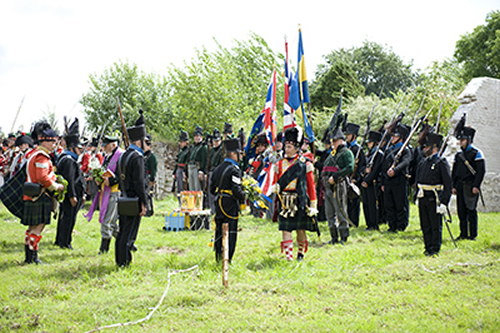 The English army numbered 70,000 men, including 13,000 cavalry and 150 guns. The English army numbered 70,000 men, including 13,000 cavalry and 150 guns.
It occupied a semicircular plateau, on which come to meet, in the village of Mont-Saint-Jean, the two roads of Nivelles and Charleroi in Brussels.
At the foot of the plateau, in the center, the English occupied Haie Sainte.
On the right, they held in plain the castle of Hougoumont; on the left, Smouhen, La Haie, Papelotte, and Ohain in the direction of Wavre.
Behind was the forest of Soignes, with the village of Waterloo.
Napoleon had 72,000 men, including 15,000 horsemen and 240 guns.
He was counting on victory.
He did not know that Grouchy, delayed in his march and uncertain as to the direction to follow, would not arrive until the evening of the 18th in front of the Prussians at Wavre, and could not, with 33,000 men against 90,000, prevent two-thirds of the army Prussian to arrive at Mont-Saint-Jean.
As at L'Igny, the battle began too late: we wanted to wait until the soil, soaked by the storm was firmed.
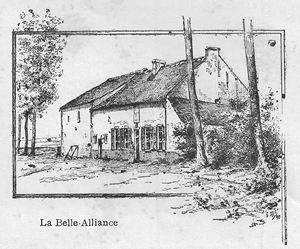 Napoleon intended to approach the left wing of the enemy, the weakest part of his line, and to reject it on the center. Napoleon intended to approach the left wing of the enemy, the weakest part of his line, and to reject it on the center.
This maneuver, if it succeeded, separated the English from the Prussians for ever.
At half-past eleven, our left, led by Reille, Guilleminot, Bauduin, Foy, Bachelu, and Jerome, attacked on the right of the English the castle, the farm, and the woods of Hougoumont, around which a terrible combat was engaged.
During this time, 70 pieces of cannon, in battery on the heights of the Belle-Alliance, thundered the center and the left of Wellington.
At this moment Napoleon perceived at the extreme right of his line a black cloud.
He sent an aide, from camp to reconnaissance.
It was the vanguard of 30,000 Prussians, who came from Wavre, with Bulow, to the aid of the English.
Napoleon placed Lobau with 10,000 men on our right flank to contain them when they arrived.
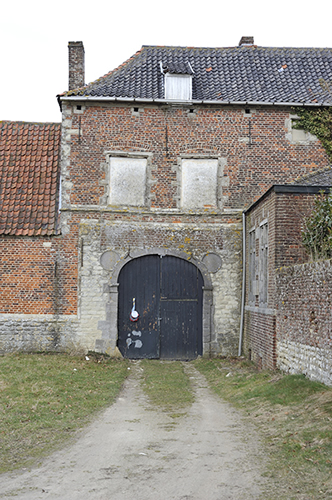 At the same time, at one o'clock in the afternoon, he had the English left attacked by the four infantry divisions of Drouet d'Erlon (Alix, Donzalot, Marcognet, Duette). In haste, the troops are ranged in masks of twenty-seven ranks deep, all battalions deployed and unable to form squares. At the same time, at one o'clock in the afternoon, he had the English left attacked by the four infantry divisions of Drouet d'Erlon (Alix, Donzalot, Marcognet, Duette). In haste, the troops are ranged in masks of twenty-seven ranks deep, all battalions deployed and unable to form squares.
The shock was terrible: we fired so close that the flocks came with the bullets in the wounds.
The English general Picton was killed.
But at this moment Wellington is launching Ponsonby's Scottish Gray Dragons against D'Erlon's infantry, who break it down, slash it, pursue it, take the two flags of the 103rd and 45th of the line, and disrupt two batteries that came to the rescue. of our infantrymen.
Charged then by our cuirassiers and our spearmen, the enemy dragons perish almost all their leader, Ponsonby, falls the body pierced of seven lance shots.
The French had nevertheless lost 5,000 men.
At the attack on the Holy Hague, they had also failed.
It was three o'clock; Bulow's Prussians were approaching.
Napoleon persists in attacking the English army.
Only, instead of turning his main effort against Wellington's left, he will now attack it in the center, the strongest part of the enemy position.
For that, it was necessary first to remove the Hedge-Saint.
Ney has the village attacked by D'Erlon's infantry.
She seizes it; of the German battalion that defended him with Major Baring, only 42 men remain.
The French arrived at the foot of the plateau. Four o'clock was going to ring.
The decisive moment seemed come.
The two cuirassier divisions of Milhaud, the chasseurs on horseback and the spearmen of Lefebvre-Desnouettes' guards, in all 5,000 horses, climbed at a great trot the slope of the plateau of Mont-Saint-Jean.
Ney is at their head.
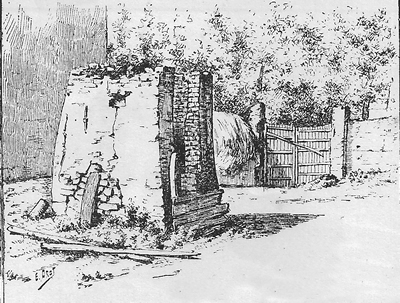 Helmets and cuirasses shine in the sun. Helmets and cuirasses shine in the sun.
Our riders crown the ridge.
They wipe out the discharge of the English cannons.
But the trumpet sounds.
At the cry of Vive l'Empereur! the cuirassiers rush forward.
Abandoning their pieces, the gunners had taken refuge in the ranks of the English infantry formed into squares.
The cuirassiers throw themselves upon her, wipe the fire at point-blank range, and rush upon the bayonets.
But the resistance is fierce; the enemy cavalry comes to the aid of its infantrymen.
Exhausted by this unequal battle, the cuirassiers descend from the plateau, whose Wellington soldiers once again occupy the banks.
This first charge of cavalry had been postponed to five o'clock in the evening. Bulow, who had left Wavre at daybreak with 30,000 men and 88 guns, had begun the fight for half an hour and was forcing the 10,000 soldiers of Lobau to retreat.
Already the enemy's balls fell on the rear of our troops engaged against the English.
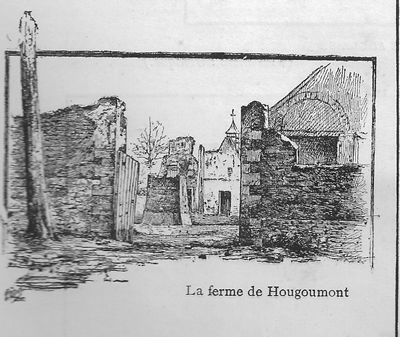 Our horsemen stood motionless, under the fire, at the foot of the plateau. Our horsemen stood motionless, under the fire, at the foot of the plateau.
Ney leads them to a second general charge; he places himself at the head of Milhaud's cuirassiers, lancers and hunters of Lefebvre-des-nouettes. Our cavalry once again covers the land between the two roads and Mont-Saint-Jean.
Kellermann follows Milhaud with his division of cuirassiers.
The brigade of riflemen moves in its turn.
The dragons and pomegranates on horseback mimic this example.
10,000 horsemen rush out of the twenty-six battalions of the British center formed into squares.
A second time the guns are in our hands.
The Cumberland hussars are running away.
That the French infantry second our riders, and the English center will be broken.
"From the infantry I where do you want me to take it? do you want me to do it? Napoleon replied to Colonel Hymès, Ney's aide-de-camp, who had come to ask him for help.
The fight went on furiously.
Five French generals were out of action; three enemy generals killed, two wounded.
"In vain says a historian, Ney engaged to his last squadron ... in vain whole squares were overthrown, scattered, crushed ... in vain the numerous squadrons came to the rescue of the infantry were sabred, mutilated, dislocated ; the flag of Great Britain continued to float on the fatal plateau, and after a struggle of nearly two hours, a struggle without example in the annals of the war, our cavalry, disorganized by incessant efforts ..., the arms exhausted by so many blows, her panting horses, exhausted by so many violent movements on a muddy ground, had to make up their minds, trembling with rage, to descend the slope she had climbed into the conviction of success. (Colonel Charras.)
Reille's troops were still fighting near Hougoumont, those of Drouet d'Erlon in front of the Hague. Smouhen and Papelotte. A second battle was taking place on our right flank between Lobau and Bulow.
To support Lobau, who recoiled crushed by numbers, it was necessary first to send the young guard with Duhesme, at the moment when Ney, on the plateau, asked Napoleon for infantry.
That's not enough.
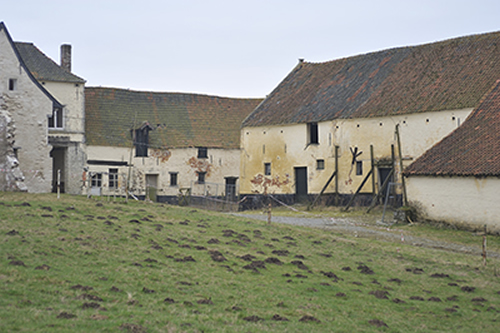 Morand had to charge the Prussians with bayonets with three battalions of the old guard to take Plancenoit back. Morand had to charge the Prussians with bayonets with three battalions of the old guard to take Plancenoit back.
All Bulow's body pulled back.
It was nearly seven o'clock.
"French," said Ney to his horsemen, remaining under the fire, "hold fast; it is here that are the keys of our liberties »
"You and I," he said to d'Erlon, "if we are not killed here, we will be hanged in Paris. "
Napoleon had only ten battalions of fresh troops; but it was the old guard, and he thought he was rid of the Prussians.
Six battalions of grenadiers and hunters, 3,000 veterans led by Ney and four generals (Friant, Roguet, Michel, Porte de Morvan), climb the plateau.
The Anglo-Dutch see approaching the fearsome hats naked.
But they hold firm: they know that a second Prussian body is advancing.
"Stay here, boys," exclaims Wellington. What would be said of us in England if we recoiled? "You can be killed," Lord Hill said to him, "your instructions-hold here to the last man! "
The guard approaches the enemy, overthrows the soldiers of Brunswick, Nassau, and the Dutch; the Prince of Orange falls from a horse struck by a bullet.
But suddenly a new line stands before our soldiers.
"Stand up, English guards, and just shoot! Exclaims Wellington.
The soldiers of Maitland, lying in the wheat, get up and fire.
General Michel is killed; Ney loses his fourth horse.
In spite of the efforts of the brave of the brave, the guard, diminished by half, retreats.
It is eight o'clock, and the sun is setting.
The shooting is redoubling on our extreme right: it is Ziethen who arrives with 20,000 Prussians, led by Blücher, and bridges the interval between the English and Bulow. Save who can!
The divisions of Drouet disband.
The English cavalry descends from the plateau.
All French bodies are routed.
The English are masters of the Holy Hague, the Prussians of Plancenoit.
Only the imperial guard is formed in squares at the height of the Belle-Alliance. Napoleon takes refuge in his ranks, sword in hand.
Attacked by the cannon, the infantry, the cavalry, loaded, enveloped, machine-gunned, the guard, by the voice of Cambronne, refuses to surrender.
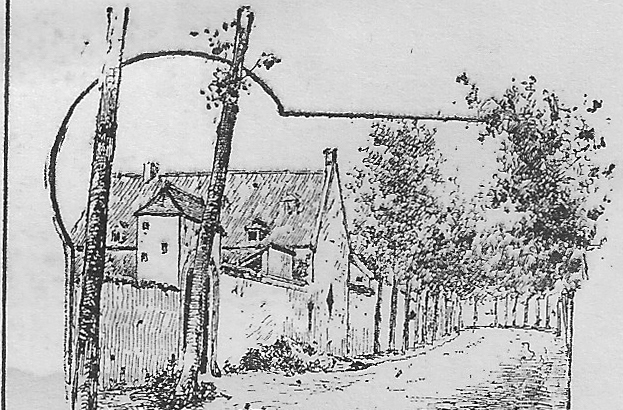 When its squares are broken, those who survive are made bayonet and follow the torrent of fugitives. When its squares are broken, those who survive are made bayonet and follow the torrent of fugitives.
While Wellington and Blücher kiss at Belle-Alliance, the Gneisenau riders pursue the French.
A Prussian drum rises on one of the horses unharnessed from the Emperor's car and beats the charge at the head of the enemy columns.
Sabrats in the moonlight, the vanquished are hunted successively from Genappe, Quatre-Bras and Frasnes.
There, only, the enemy squadrons stopped.
The French were able to reach Charleroi, where they passed the Sambre, disorganized, exhausted, and dying of hunger. They had lost 25,000 men, the English and Prussians gathered 22,000.
France was defeated.
Everything was over for Napoleon.
The configuration of the ground has been completely changed, it seems, since that time.
Here the roads of Charleroi and Namur intersect.
If we continue for about three kilometers, we will reach the very village of Waterloo, consisting of a double row of houses and inns on both sides of the road.
It is from Waterloo that Wellington gives his victory report.
The church and the village cemetery are filled with commemorative inscriptions.
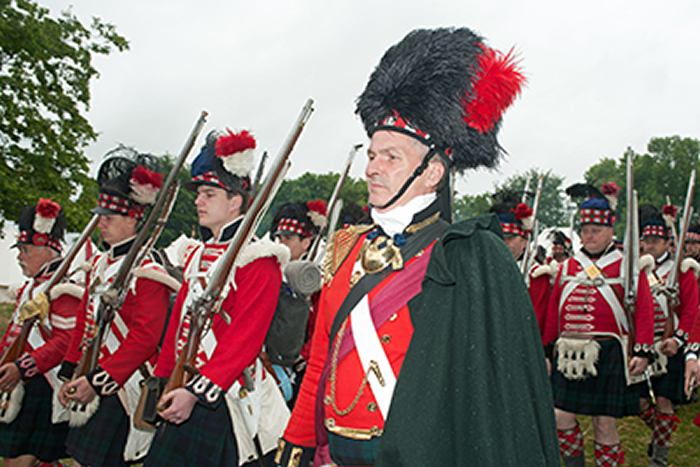
|
 The English army numbered 70,000 men, including 13,000 cavalry and 150 guns.
The English army numbered 70,000 men, including 13,000 cavalry and 150 guns. Napoleon intended to approach the left wing of the enemy, the weakest part of his line, and to reject it on the center.
Napoleon intended to approach the left wing of the enemy, the weakest part of his line, and to reject it on the center. At the same time, at one o'clock in the afternoon, he had the English left attacked by the four infantry divisions of Drouet d'Erlon (Alix, Donzalot, Marcognet, Duette). In haste, the troops are ranged in masks of twenty-seven ranks deep, all battalions deployed and unable to form squares.
At the same time, at one o'clock in the afternoon, he had the English left attacked by the four infantry divisions of Drouet d'Erlon (Alix, Donzalot, Marcognet, Duette). In haste, the troops are ranged in masks of twenty-seven ranks deep, all battalions deployed and unable to form squares. Helmets and cuirasses shine in the sun.
Helmets and cuirasses shine in the sun. Our horsemen stood motionless, under the fire, at the foot of the plateau.
Our horsemen stood motionless, under the fire, at the foot of the plateau. Morand had to charge the Prussians with bayonets with three battalions of the old guard to take Plancenoit back.
Morand had to charge the Prussians with bayonets with three battalions of the old guard to take Plancenoit back. When its squares are broken, those who survive are made bayonet and follow the torrent of fugitives.
When its squares are broken, those who survive are made bayonet and follow the torrent of fugitives.